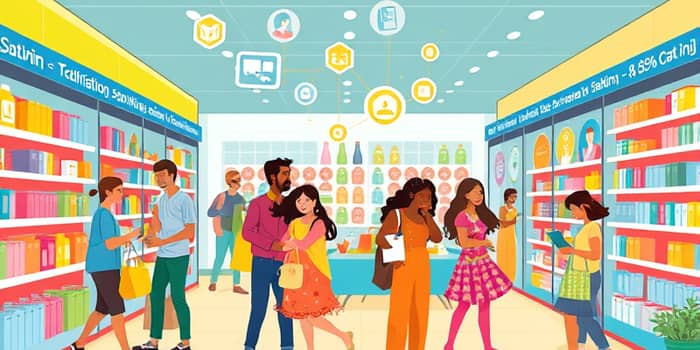
As the retail landscape evolves in 2025, Americans are opening their wallets with a mix of hope and hesitation. Annual retail sales are forecast to grow between 2.7% and 3.7% over 2024, reaching up to $5.48 trillion. Yet beneath this headline growth, a closer look at consumer behavior reveals a dual narrative: households want to spend, but they proceed with caution.
In May 2025, year-over-year retail sales growth slowed to 3.3%, and real sales growth dipped from 2.6% to a meager 0.9% after inflation adjustments. This deceleration reflects a climate of prudent decision-making, shaped by economic uncertainty and shifting priorities.
Despite the slowdown, retail sales remain in line with the pre-pandemic average. Non-store and online sales continue their upward trajectory, projected to rise between 7% and 9%, totaling as much as $1.6 trillion. Meanwhile, monthly data point to a 0.9% decline from April to May, offset by a 3.0% increase compared to last year. These figures underscore a retail sector that is resilient but not immune to broader economic pressures.
General merchandise stores stand out as top performers, with a 4.1% year-over-year jump, while food services and clothing sales lag behind. The average transaction size is holding steady at $51.27, a marginal increase from the previous year, revealing that consumers may be purchasing strategically rather than splurging impulsively.
Surveys paint a nuanced picture of household confidence. A majority of adults—67%—feel optimistic about their financial future, yet 56% still fret over stability, and 26% doubt their ability to cover basic necessities. The University of Michigan Consumer Sentiment Index hit its lowest level since June 2022, plummeting 11% in April.
Facing mixed emotions, many consumers adopt new approaches to spending and saving:
Several macroeconomic forces are influencing consumer decisions, creating an environment where optimism coexists with prudence:
These factors collectively encourage households to tailor spending, favoring essential items and discount options over luxury or impulse buys.
Retail performance is uneven across categories, reflecting divergent consumer priorities. Below is an overview of sector growth:
Online sales continue to drive overall gains, as households embrace convenience and competitive pricing from digital storefronts. Meanwhile, in-person channels experiment with pop culture tie-ins and AI-powered tools to spark engagement and maintain foot traffic.
In this environment of selective spending, retailers can foster loyalty and growth by focusing on strategies that resonate with cautious yet curious consumers:
By aligning operations with consumer priorities—value, flexibility, and engagement—retailers can capture a greater share of wallet even when overall spending is tempered.
Consumers can turn cautious optimism into advantage by adopting practices that balance enjoyment with financial prudence. Start by tracking monthly budgets to identify savings opportunities, ensuring essentials are prioritized. Comparing prices across channels and applying digital coupons helps stretch every dollar.
Timing purchases around seasonal sales or promotional events can significantly reduce costs on big-ticket items. Additionally, exploring subscription services for household staples or buying in bulk delivers long-term value without sacrificing quality.
By weaving these budget-conscious tactics into daily routines, families can preserve financial health and still enjoy life’s small luxuries.
Despite the paradox between negative consumer sentiment and spending, aggregate real consumption since 2021 has outpaced pre-2010 averages. This indicates that while households express caution, their actions reflect strategic reallocations rather than pure retrenchment. Travel spending has rebounded, and essential services remain robust, signaling that optimism still underlies the caution.
This disconnect highlights an important truth: perception and behavior can diverge when consumers are deliberate about how and where they spend. Retailers who understand this dynamic can tailor offerings to meet households at the intersection of careful budgeting and aspirational experiences.
As 2025 unfolds, the retail sector will continue to navigate the fine line between cautious optimism and economic headwinds. By staying responsive to evolving consumer needs—prioritizing transparency, value, and engagement—both retailers and households can thrive. Retailers should monitor data closely, adapting strategies to emerging trends, while consumers can employ budget-savvy measures to protect their financial health without forgoing the joys of modern commerce.
Ultimately, the story of retail sales in 2025 is one of resilience and adaptation. Households are not retreating; they are simply becoming more intentional. And in that intentionality lies an opportunity for growth—proof that even in uncertain times, the connection between shoppers and retail experiences remains both dynamic and inspiring.
References













